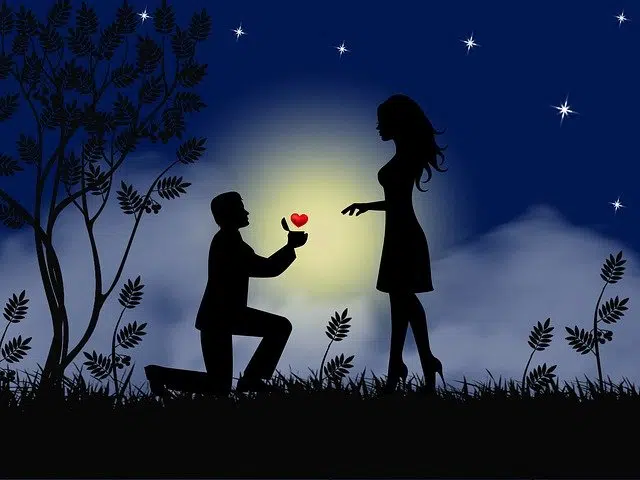
Romanticism can be linked to the expression of feelings.
Romanticism is a term that can be used in different ways. It may be the characteristic of someone who is romantic (who expresses or shares his or her feelings or who is idealistic).
For example: “The actor once again showed off his romanticism by sending a message of love to his wife through television,” “I understand that your dream is to be a singer, but you have to put romanticism aside and look for a job. ” rented to be able to support you” , “It was a magical night, where romance was felt in the air and we had the opportunity to meet again as a couple” .
Romanticism as a movement
Romanticism, on the other hand, is a term used to name a cultural movement that emerged at the end of the 18th century and that developed in the first decades of the 19th century . Romanticism arose in opposition to the Enlightenment , privileging feelings over reason.
In its different artistic and philosophical expressions, romanticism (which is usually written with a capital letter when referring to the time in which it was the dominant trend) evidences a valorization of the individual and originality . The movement, on the other hand, highlights the subjective and the personal .
Musicians such as Ludwig van Beethoven and Richard Wagner , writers such as Johann Wolfgang von Goethe , Victor Hugo and Lord Byron and painters such as Eugène Delacroix and Joseph Mallord William Turner are considered among the promoters and greatest exponents of romanticism, whose influence reached other currents through throughout the 20th century .

Ludwig van Beethoven is noted as one of the promoters of romanticism in music.
Its importance in literature
One of the most significant changes in prose was brought about by the emergence of the article of customs , (also called a table of customs ) a subgenre of costumbrista literature characterized by descriptions of popular types and behaviors, habits, attitudes and values typical of a region, class or profession, generally with a nostalgic or satirical character.
During literary romanticism, the individual prevailed, and this increased the popularity of autobiographies. On the other hand, the historical novel , the legend and the Gothic novel appeared, and interest in genres of the Middle Ages such as romance and ballads resurfaced. The expression of romanticism was especially supported by theater, the most successful genre. The poets, for their part, sought to distance themselves from the norms of neoclassicism.
Romanticism in music
It is believed that its origin took place in Germany, specifically through the work of Beethoven and then Carl Maria von Weber and Félix Mendelssohn. The style of Romantic music can be described as Novelesque and imaginative , since its melodies present feelings in a supernatural way, which opens the doors to a realm that until then had not been explored.
Two predominant elements were programmatic music (which seeks to awaken in listeners images or ideas beyond the musical field, such as moods or feelings) and chromaticism (the use of intermediate notes, also called semitones, of a scale. , which gives rise to flats and sharps). At the beginning of the 20th century, romanticism began to lose strength, giving way to impressionism .
His presence in painting
In the field of painting, it is possible to distinguish between the following three stages:
* Preromanticism occurred between 1770 and 1820 and included the Rococo and Neoclassical movements. The works had the objective of representing feelings, giving an important space to mystery;
* apogee : until 1850, pictorial romanticism experienced its period of splendor. A new way of understanding the landscape appeared and works were created that described moments in modern history;
* post-romanticism is about its decadence. By 1870, the prevalence of Mannerism (a style considered elitist and opposed to the classicist ideal of beauty) grew more and more.
